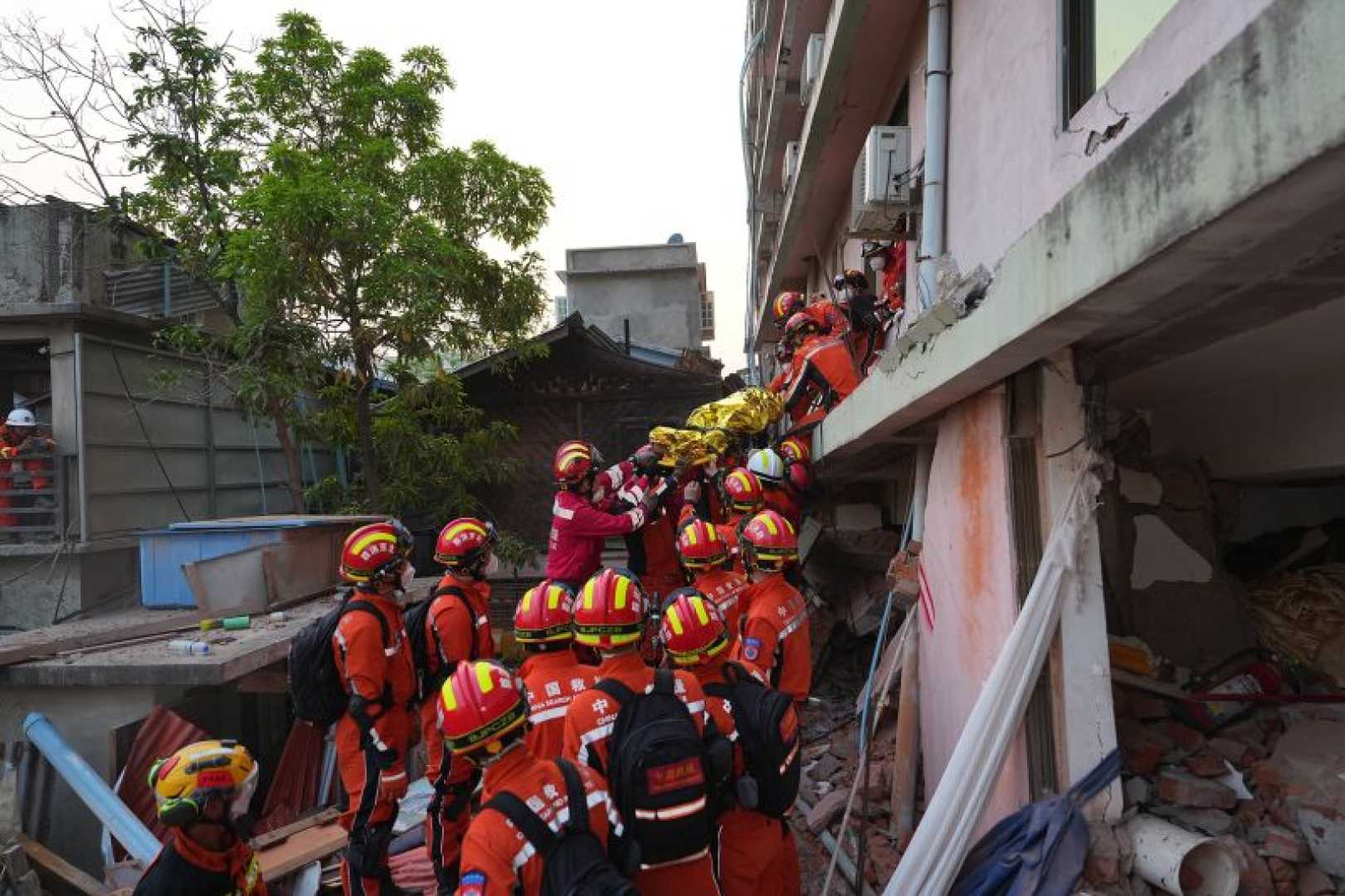World
Myanmar Struggles with Earthquake Aftermath Amid Ongoing Violence

NAYPYITAW, Myanmar — Search and rescue teams continued to recover bodies on Friday, April 3, a week after a devastating earthquake claimed over 3,100 lives in Myanmar. The focus has shifted to urgent humanitarian needs in a nation already in turmoil due to ongoing conflict.
United Nations humanitarian chief Tom Fletcher arrived in Myanmar on Friday to galvanize international support following the March 28 quake. Ahead of his visit, U.N. Secretary-General Antonio Guterres urged the global community to enhance funding for quake victims to address the scale of the disaster. He highlighted the necessity for unimpeded access to aid, as the approaching monsoon season threatens to compound the crisis. “The earthquake has supercharged the suffering with the monsoon season just around the corner,” Guterres remarked.
In the aftermath of the earthquake, Myanmar’s military and prominent armed resistance groups have taken steps to facilitate the delivery of humanitarian aid. However, the U.N. Human Rights Office reported more than 60 military attacks since the earthquake, with 16 incidents occurring even after a temporary ceasefire was announced on Wednesday. U.N. High Commissioner for Human Rights Volker Türk called for an immediate cessation of military operations, emphasizing the need for efforts to assist those impacted by the quake. “I hope this terrible tragedy can be a turning point for the country towards an inclusive political solution,” Türk stated.
The military, which seized control of Myanmar from the democratically elected government led by Aung San Suu Kyi in 2021, issued a ceasefire declaration but warned it would act against resistance groups if they exploited the ceasefire to regroup or launch attacks. The armed groups have declared their right to self-defense.
The earthquake has exacerbated Myanmar’s humanitarian crisis, with over 3 million people already displaced and nearly 20 million in need of assistance before the quake struck, according to the United Nations. As of Thursday, officials reported 3,145 deaths, with 4,589 individuals injured and 221 still missing.
In response to the disaster, the United Kingdom pledged an additional $6.5 million to support humanitarian efforts, adding to earlier commitments of $13 million for emergency supplies, including food and shelter, as confirmed by the U.K. Embassy in Yangon.
The World Food Program has reached 24,000 survivors so far and is working to assist 850,000 individuals with food and cash support over the next month. A coalition of international search and rescue teams is currently on the ground. Medical crews from China, Thailand, Japan, Bangladesh, Bhutan, the Philippines, Indonesia, and Russia are operating in Naypyitaw. Additional teams from India, Russia, Laos, Nepal, and Singapore are providing assistance in the Mandalay region, while collaborative efforts in the Sagaing region include teams from Russia, Malaysia, and the ASEAN group.
The Trump administration has announced a $2 million aid commitment and dispatched a team to evaluate the most effective response strategies given recent cutbacks to U.S. foreign assistance.
On Friday, five additional bodies were recovered from the rubble in Naypyitaw and Mandalay, while the last reported rescue occurred 125 hours after the quake, with a man saved from a hotel in Mandalay. The tremor also affected neighboring Thailand, where it resulted in the collapse of an under-construction high-rise in Bangkok, leading to 22 fatalities and 35 injuries as recovery operations continue.












